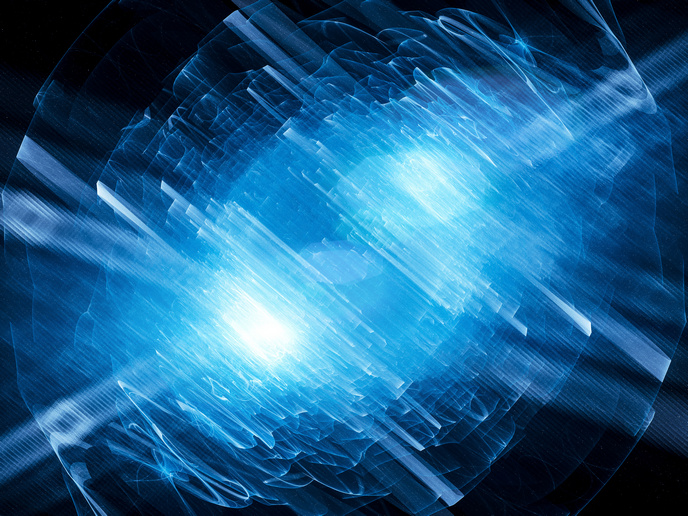Making light supersolid in a world first
Researchers supported by the EU-funded Q-ONE and PolArt projects have made light behave like a supersolid for the very first time. This remarkable achievement could pave the way for a better understanding of the strange quantum phase of matter called supersolidity and open the door to many new applications, such as quantum computers and superconductors. In a supersolid state, particles are arranged in an orderly crystalline structure, but they can also flow freely like a non-viscous liquid. Scientists only succeeded in producing convincing experimental evidence of this state in 2017. Now, in their study published in the journal ‘Nature’, researchers from Austria, Italy and the United States have taken this knowledge a step further and transformed actual light into a supersolid. “This is only the beginning of understanding supersolidity,” state two study co-authors, Italy-based physicists Antonio Gianfrate of National Research Council Institute CNR-NANOTEC and Davide Nigro of the University of Pavia, in a recent ‘Newsweek’ article. CNR-NANOTEC is the nanotechnology institute of Italy’s National Research Council, which is the coordinator of the Q-ONE project and a partner in PolArt.
Emergence of the exotic
Phases of matter such as supersolids usually occur at extremely low temperatures approaching absolute zero (-273.15 ℃). These are the temperatures at which “the quantum-mechanical nature of atoms emerges and exotic phases of matter appear,” according to the researchers. The potential existence of such exotic phases inspired the physicists to experiment with photons. To create their supersolid, the research team directed laser light at a photonic semiconductor platform made of aluminium gallium arsenide, in which photons are conducted like electrons. Their system relies on the formation of bosonic quasiparticles called ‘polaritons’, created by coupling photons with excitons through strong electromagnetic interactions. In this system, photons can occupy one of three quantum states, all with the same energy but different wavenumbers. At first, the few photons in the semiconductor platform have different frequencies and wavelengths out of phase with each other. However, once they hit a threshold count, they form a single polariton condensate at the lowest possible energy state. In ‘Newsweek’, Gianfrate and Nigro liken the situation to a crowded theatre where only three seats in the front row are empty – one in the centre and two on either end of the row. “The central seat has the best view, so that’s where people want to sit, but only a single person can sit there,” they explain. “In a quantum theatre … everyone can sit in the central seat, forming what is called a Bose–Einstein condensate—a superfluid state in which a large fraction of particles simultaneously occupy the lowest-energy quantum state.” When the number of photons in the centre seat reaches a certain threshold, pairs of photons are pushed into the other two seats – the adjacent states – to lower the system’s energy. “These photons form satellite condensates that have opposite nonzero wavenumbers but the same energy (they are isoenergetic),” the researchers comment, noting that this is how the supersolid state emerges. The Q-ONE (Quantum Optical Networks based on Exciton-polaritons) project ends in 2027. PolArt (Neuromorphic Polariton Accelerator) ends in 2028. For more information, please see: Q-ONE project website PolArt project website
Keywords
Q-ONE, PolArt, photon, light, polariton, supersolid, quantum, state, energy, particle, semiconductor



